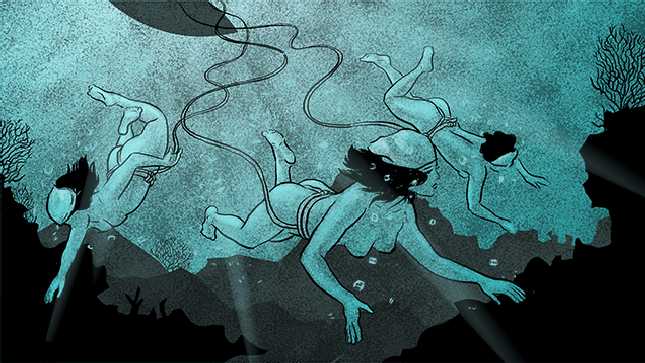The Disappearing Ama: Japan's Tough, Topless, Free-Diving Mermaids
Latest

In the 1920s, a young law school graduate named Yoshiyuki Iwase left Tokyo and returned to his hometown of Onjuku, a fishing village in eastern Japan. With an early Kodak camera, he began documenting the traditions of the ama, women who dove for seaweed, shellfish, and most famously, pearls. What remains of Iwase’s multi-decade career is the most comprehensive record of a legendarily tough, beautiful female community that today is almost all but gone.
Depending on the characters used, the word ama means literally “women of the sea” or “people of the sea.” Men would occasionally dive, too, but it was believed that the fat content of women’s bodies better armed them for plunging into frigid waters. In Japan, the tradition is said to be 2,000 years old. Before the invention of wetsuits, ama would customarily dive wearing only loincloths—it is easier to warm up without wet clothes clinging to your skin—and an experienced diver could go as deep as 30 meters and hold her breath for as long as two minutes at a time. The ama dived from the shore or from boats, with rope strung around their waists, and men would wait in the boats above to pull them back up.
Iwase’s photographs, taken from the 1930s through the 60s, suggest the sort of intense bond forged only through shared—and often grueling—labor. In one, the ama push a boat ashore, their strong, bronzed bodies taut with the effort. In another, they huddle around a fire after a dive; what you can see of their faces through the clouds of smoke reveals that they are smiling. In another, two women lounge on the beach, gritty with sand, their dive masks pushed up to their foreheads. They’re beaming at each other. Iwase’s images communicate a barrage of sensory information—studying them, we can imagine filling our lungs with precious air and plummeting to the icy depths, rummaging, through the murk, for abalone or oysters. Then the return to the surface, wading through the shallows, carrying baskets of the day’s haul, the sun drying our skin. The risk and the difficulty, the physical toll the work took, as well as its rewards, were things the ama, as women living in a culture with rigid gender expectations, shared only with each other.
50 years later, a German photographer named Nina Poppe visited another group of ama near Ise, home to Japan’s most sacred Shinto shrine. Her photographs reveal an aging community, in which most of the divers are middle-aged or elderly. Her images, compared to Iwase’s, which feel full of chatter and activity, are muted and even lonely in tone. In many of the frames, only a single ama is visible: a distant pair of upturned fins in a vast sea, a sole woman pushing her cart full of diving gear along a road. It’s clear this once rich and romanticized culture is now significantly diminished—but how did it happen?
Sei Shonagon, the 11th century noblewoman who wrote The Pillow Book, a collection of her opinions and observations, encountered the ama during her travels and described their work with trepidation: “One wonders what would happen to them if the cord round their waist was to break.” At the same time the ama were risking their lives far beneath the choppy waters, Sei Shoganon wrote, “the men sit comfortably in their boats, heartily singing songs… they do not show the slightest concern about the risks the woman is taking.”
Socially, the ama‘s labor was certainly less valued than that of men. Dolores P. Martinez, an anthropologist who studied the ama, notes in her book Identity and Ritual in a Japanese Diving Village that men only deigned to dive when times were lean for standard fishing. Under the Tokugawa shogunate, the feudal military rulers who reigned from 1603 to 1868, all those who fished and hunted were classified as hinnin—”wandering people who, in Buddhist terms, were engaged in polluting work,” Martinez writes. Even today, discrimination in Japan persists against those who work or are descended from people who worked in industries associated with death and impurity.
-

-

-

-

-

-

-

-

-

-

-

-

-

-

-

-

-

-

-

-

-

-

-

-

-

-

-

-

-

-

-

-

-

-

-

-

-

-

-

-








































